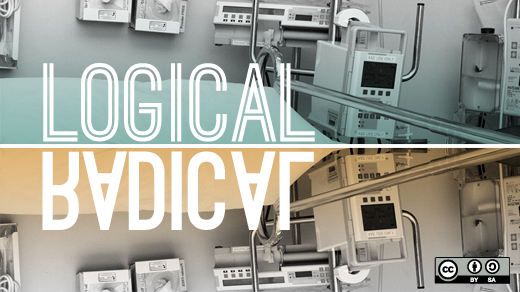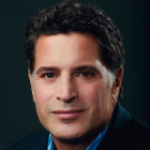Not long ago, I was in the audience at a symposium organized by the leaders of the Henry Ford Health System, a $4-billion-a-year health-and-hospital company based in Detroit. The organization's leaders had called the symposium to explain to local executives why they were making the biggest strategic bet in the system's history since its founding by Henry Ford himself back in 1915.
Many observers thought the hospital was taking too big a risk, that its strategy was too radical. But Robert Riney, COO of the organization, turned those worries on their head. "It's not radical to 'go radical,'" he told the wide-eyed group. "It's logical to go radical. How can you look at the situation in our industry and say the answer is to make incremental change?"
This article was originally posted on the Management Innovation eXchange (MIX), an open innovation project aimed at reinventing management for the 21st century.
What was the bold move on people's minds? The organization's decision to build one of the most remarkable healthcare facilities that I (or anyone) has ever seen, the Henry Ford West Bloomfield Hospital in West Bloomfield, Michigan. The $360-million facility, roughly 23 miles northwest of the original Henry Ford Hospital, is a one-of-a-kind innovation that reimagines the sense of what's possible in its field.
"This was the first hospital we had built since 1915," says Nancy Schlichting, CEO of the Henry Ford system. "Our other hospitals joined the system through acquisition. So we kept pushing: What is going to distinguish this hospital? What could we do that was unique and transformational? This had to be an exceptional place."
What's so exceptional about West Bloomfield? The hospital is built to resemble a northern Michigan lodge, on a 160-acre campus with rolling woods, scenic wetlands, and a pond. All 300 rooms (the first 191 of which opened in March 2009) are private and designed to accommodate family members who wish to stay overnight. All patients go to pre-assigned rooms when they arrive, rather than waste time in the lobby with forms. There's a concierge to help with errands and a "tea sommelier" who touts the virtues of swimming marigold, tender lotus blossom, and other blends. There's a day spa (Vita) and an indoor farmer's market every Wednesday. The Detroit Symphony Orchestra even pipes live feeds into the hospital, and has done two full-blown concerts in the atrium.
Oh, about that atrium. The beautiful indoor space looks nothing like a traditional hospital. More than two thousand live plants and trees line the curved "streets," which are decked out with various shops (selling products for sounder sleep, better diets, and so on) that fee like the world's healthiest vacation village. The food, by the way, is to die for (pun intended). Matt Prentice, a celebrity chef based in Bingham Farms, between Detroit West Bloomfield, spent two years creating 3,000 recipes so that patients can choose from items that are kosher, halal, organic, or gluten-free. Indeed, the space is so striking and the food so appealing that the hospital is on track to generate millions of dollars a year hosting and catering functions for companies and community groups. "I'm going to revolutionize hospital food," Prentice has vowed.
If the place sounds more like an elegant hotel than a traditional hospital, that's no accident. Gerard van Grinsven, West Bloomfield's CEO, joined Henry Ford in March 2006 (three years before his new facility opened its doors) after a long career with Ritz-Carlton, where he opened 20 properties around the world, served as vice president of food and beverage.
"We've looked for opportunities to create 'hot spots'--memorable, signature moments in the customer experience that surprise and delight our patients and their families," CEO van Grinsven told me during a tour of West Bloomfield a few months before it opened. "It starts with how you're welcomed. You're worried, you're scared, the last thing you want is to step into noise and chaos. So we're going to escort you, offer an arm if you need it, get you right to your room. When you visit the cafe, or order from room service, we want you to say, 'I never thought hospital food could be like this.' When you're in your room, a concierge talks to you and your family: 'Do we need to do some shopping for you? Do we need to take care of any laundry?' We have high tea in the atrium every afternoon. These hot spots cost almost nothing to create, yet they create a tremendous impression for everyone who encounters them."
Questions of cost loom large for any hospital, of course, and many experts inside and outside the health-care field wondered how West Bloomfield could create its unique patient experience without busting budgets and creating all sorts of unsustainable financial pressures. In fact, van Grinsven insists, the hospital's change-the-game logic is to use these quality-enhancing innovation to bring down costs. "We don't have private rooms to be fancy," he argues. "We have private rooms because they significantly reduce rates of infection in the hospital and add to the personal privacy of patients. Over the long term, our focus on wellness and prevention will reduce overall health-care costs for the community, as people learn to take better care of themselves and avoid, or at least better manage, chronic diseases, which account for a huge portion of health-care spending in the country. This is a hospital designed to keep you well, and that design lowers costs for everyone."
Which is why, in addition to the private rooms, the scrumptious menu, and the concierge service, the hospital is designed as much to be a teaching organization as a service organization. Its cobblestoned-paved atrium, designed to evoke an old-fashioned downtown, includes a 90-seat demonstration kitchen where members of the community take classes on healthier cooking, and patients with cancer, heart disease, or diabetes can learn to prepare meals that are right for their conditions. The atrium also includes specialty retailers devoted to products for sounder sleep, healthier pregnancies, and more active lifestyles. Vita, the wellness center, offers acupuncture, therapeutic massage, yoga, and relaxation classes.
"We don't just want to be a place where sick people come," van Grinsven says. "We want to be a place where healthy people come to stay healthy. Our dream is to take health and healing beyond the boundaries of imagination."
It will be years before anyone can say whether the dream has come true, but there's no question that this model captures a spirit of innovation that's a cure for what ails so many organizations. We are living today through the age of disruption. You can't do big things if you're content with doing things a little better than everyone else or a little differently from how you've done them in the past. In an era of hyper-competition and non-stop reinvention, the only way to stand out from the crowd is to stand for something special.
Originality has become the acid test of strategy.
It's just not good enough for organizations to be "pretty good" at everything. The most successful organizations figure out how to become the most of something--the most elegant, the most simple, the most exclusive, the most affordable, the most global, the most local. For so long, organizations and their leaders were content operating in the middle of the road. But today, with so much pressure, so much change, so many new ways to do everything, the middle of the road has become the road to nowhere.
So set aside for a moment the products and technologies around which you've built your business, and ask yourself: What are the ideas that define how you do business--and that distinguish you from how everyone else in your field does business. What are you the most of, and how do you become even more of that?
Remember, it's not radical to go radical. It's logical to go radical.







1 Comment